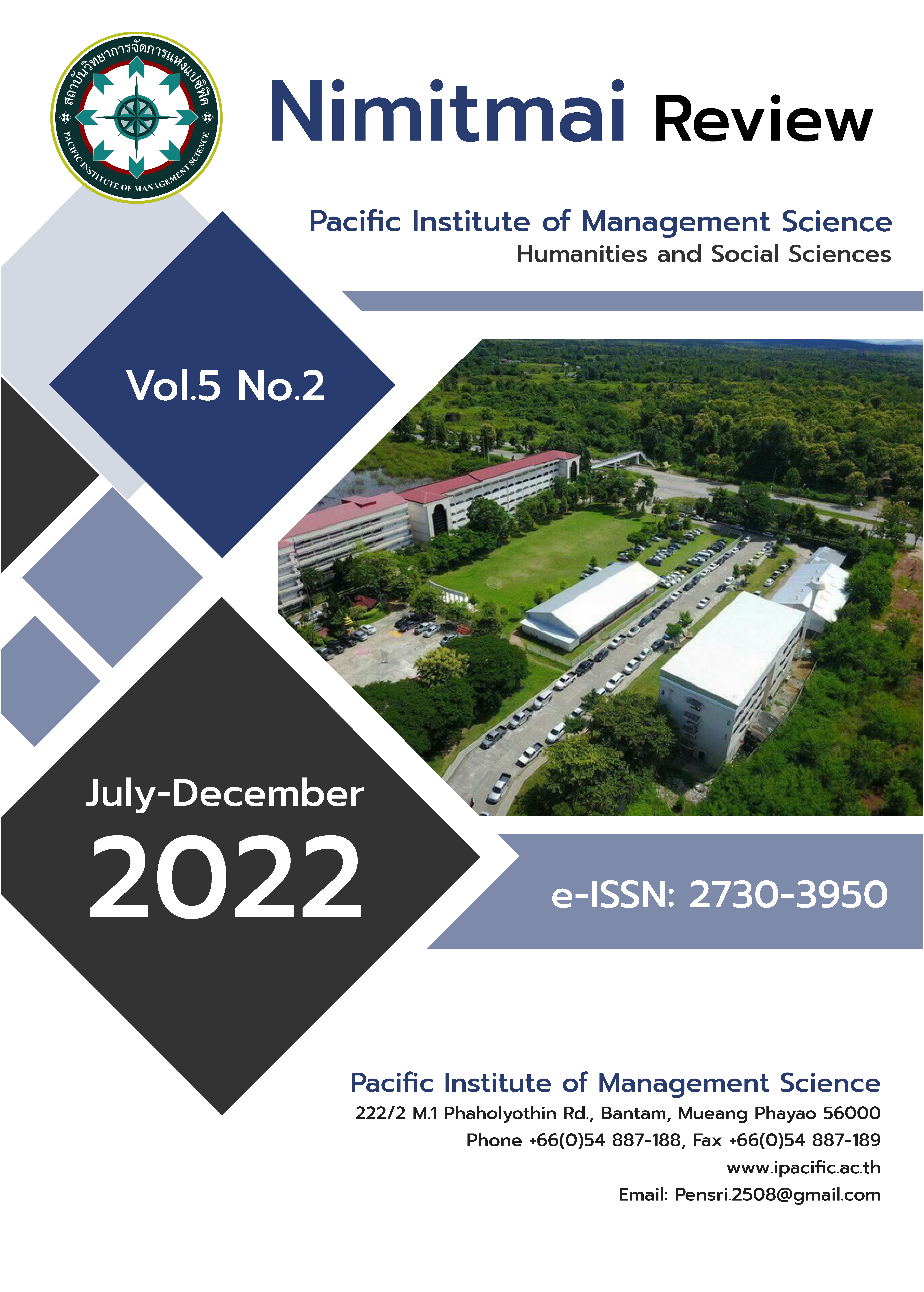Inter-disciplinary Approaches to Studying Aesthetics in Arts and Cultures
Keywords:
Aesthetics, Arts and CulturesAbstract
Aesthetics is one very ancient and yet relevant concepts in the fields of arts and culture. It has been around in humanities for thousands of years, and continued to evolve with arts and cultures through periods as a meaningful concept growing in parallel to technology and advancement of other fields. Aesthetic is one kind of philosophy examining aspects of beauty and the arts. In addition, aesthetic refers to the theory of senses and experiences. This study attempts to find ways to further benefit the study of arts and culture using the what is now interdisciplinary concepts and provides a basis for interpretation and application of aesthetics to benefit research in arts and culture, that would provide the ways for more study, discovery, and the building of knowledge. Having outlined the characteristics and importance of aesthetics in research related to arts and culture, this research article then poses two research objectives including a) to understand the implications and applications of aesthetics in arts and culture research and b) to know the ways that aesthetics can be linked to other interdisciplinary concepts in arts and culture research.
This research article uses the documentary research method covering 12 Master of Arts Program in Arts Performance Communication (MA-APC) Independent Studies on arts and cultures from 2021. Independent studies reviewed showed that aesthetics still is an important and potent concept to study arts and cultures in the contemporary society while revealing the importance of using interdisciplinary research approaches in studying arts and cultures through proper definitions, applications, and frameworks. Future research should be conducted more on interdisciplinary fields of arts and cultures in more countries in Asia and Europe to draw more insights and knowledge gained from this topic. In addition, aesthetics should also be better understood through the lens of sciences and technologies from users and marketing perspectives.
References
Cazeaux, C. (2017). Art, Research, Philosophy (Vol. 1). New York: Routledge. Retrieved from https://library.oapen.org/bitstream/id/98109fef-dd64-403b-8977-ac2af197c67b/9781138789777_text.pdf
Chen, X. C. (2022). Research on The Improvement of Vocal Music Learning in Music Education Major by Artistic Practice – Take Human Preschool Teachers College as An Example. Shinawatra University.
Chudoba, E. (2015). Introduction. (M. Ranta, Ed.) Naturalizing Aesthetics, 7-11.Li, J. (2021). Performance and Development of Chinese Nationalized Piano Works. Shinawatra University.
Li, P. (2021). Cultural Signs of Henan Province. Shinawatra University.
Lin, W. (2021). Communication Effects of Radio Music Program in Fujian Radio and Tv Stations. Shinawatra University.
Lin, Y. (2021). Adaptive Aesthetic Features of Hakka Dance. Shinawatra University.
Liu, X. (2021). Creation of Female Characters in Chinese National Opera. Shinawatra University.
Melchionne, K. (2011). A New Problem for Aesthetics. Contemporary Aesthetics, 9. Retrieved from https://quod.lib.umich.edu/: https://quod.lib.umich.edu/c/ca/7523862.0009.004/--new-problem-for-aesthetics?rgn=main;view=fulltext
Pettersson, A. (2008). Three Problematic Aspects of Analytical Aesthetics. The Nordic Journal of Aesthetics, 60-74.
Ranta, M. (2015). Art, Aesthetic Value, and Beauty : On the Evolutionary Foundations of ‘Narrative Resemblance Concepts’. In &. E. K. Wilkoszewska (Ed.), Proceedings of 19th ICA 2013 Krakow: Naturalizing Aesthetics, (pp. 59-69). Jagiellonian University, Cracow, Poland. Retrieved from https://drive.google.com/file/d/0B9I3YcIoUiMGRHFXbjNEUGRyT1E/view?usp=sharing
Ranta, M. (2015). Naturalizing Aesthetics. (E. Chudoba, & K. Wilkoszewska, Eds.) Proceedings of 19th ICA 2013 Krakow: Naturalizing Aesthetics.
Ren, Z. (2021). Modern Guzheng Music Delopment in Shandong Province. Shinawatra University.
Roelofs, M. (2016). The Aesthetic and Its Resonances: A Reply to Kathleen M. Higgins, Carolyn Korsmeyer, and Mariana Ortega. Contemporary Aesthetics (Journal Archive), 14. Retrieved from https://digitalcommons.risd.edu/liberalarts_contempaesthetics/vol14/iss1/21/?utm_source=digitalcommons.risd.edu%2Fliberalarts_contempaesthetics%2Fvol14%2Fiss1%2F21&utm_medium=PDF&utm_campaign=PDFCoverPages
Süzeni, H. N. (2020). Art and Aesthetics in Higher Education. European Journal of Education Studies, 7(6), 335-349.
Vuksanović, D. (2011). Aesthetic Theories and The Alternatives: Remix Strategies in Culture and Contemporary Art Practice. International Journal of Communication Research, 1(2), 145-152. Retrieved from https://www.ijcr.eu/articole/67_pdfsam_IJCR%202-2011.pdf
Wang, Y. (2022). Different Expressions of Isomerism – A Study on The Similarities and Differences Between Mozart and Figaro’s Arias. Shinawatra University.
Xie, H. (2021). Development of Shaanxi Zheng Guzheng Music Style. Shinawatra University.
Yang, Y. (2021). Fan Cuiting’s Adaptation of Yu Opera. Shinawatra University.
Zhai, W. (2022). Research on The User Interface Design of Smart Phone for The Post-90s Group. Shinawatra University.
Zhang, H. (2021). Jipiao Liu" Fine Art Architecture" and Chinese Architectural Decorative Art of The Modern Transformation. Shinawatra University.
Downloads
Published
How to Cite
Issue
Section
License
Copyright (c) 2022 Nimitmai Review Journal

This work is licensed under a Creative Commons Attribution-NonCommercial-NoDerivatives 4.0 International License.



